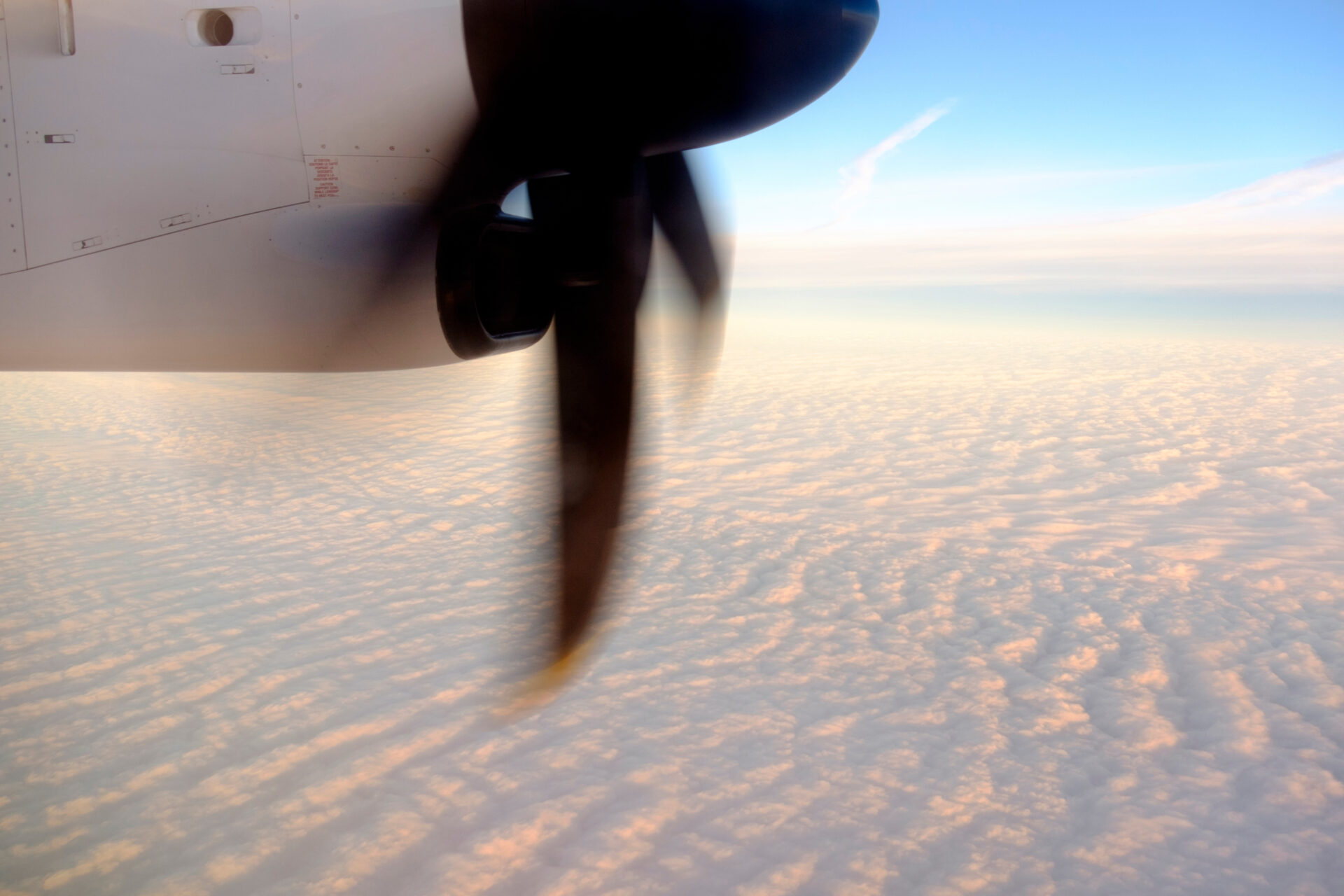sustainability
Sustainability
We are committed to working with our partners in the accelerated global quest for zero-carbon aviation by developing next generation propulsion technologies.

A bright future for propellers.
Turboprop aircraft are already inherently more efficient than jet engines as they burn 25% less fuel per equivalent journey. As the preferred propulsor for the new electrified platforms currently under development, propeller technology offers greater feasibility and a far faster entry into service.
Thanks to our unique blade design, which offers both repairability and guaranteed longer service intervals, we generate less scrap than other manufacturers.
Our environmental footprint
As a part of GE Aerospace, we are signatories to the UN Global Compact and committed to playing our part in creating a more sustainable future for generations to come. GE Aerospace has set a goal to be carbon neutral for scope 1 and 2 emissions by 2030 and Dowty has a nine-year sustainability roadmap that elaborates on the journey to achieving that goal. Some of our current sustainability initiatives and activities are illustrated here.
Emissions
Solvent emissions are associated with the spraying of polyurethane and paint coatings onto composite propeller blades. We use the best technology available in our carbon abatement plant to maximize the reduction of Volatile Organic Compounds (VOCs) that are a by-product of our paint shop.
Energy
Our Gloucester HQ (including our factory) is 100% powered by renewable electricity, reducing the carbon footprint of our operations. We encourage employees’ personal use of electric vehicles by offering multiple electric car charging points.
Compliance and governance
We have a 100% environmental compliance record with local and national requirements for our operations.
We were the first business within GE Aviation to perform a green value stream mapping exercise focusing on seven environmental waste streams:
– Energy – Materials – Trash – Emissions – Water – Transportation – Biodiversity –
This process has identified and quantified environmental wins, both large and small, such as an optimization in the usage of our dust extraction units
We have established a Green Council to drive improvements identified by the green value stream mapping. A nine-year sustainability roadmap was devised to address our 2030 carbon neutral goal.
Waste and recycling
By working alongside a specialist waste processing company, we achieve zero landfill with our non-hazardous waste. Our hazardous waste is treated and disposed of through incineration, generating ‘energy from waste’ – a partially renewable energy source.
We were participants in a one-year research project with the National Composites Centre (NCC), focusing on an end-of-life composite recycling solution for carbon fibre from composite materials.
A further project is looking at improving the recycling of metalwork from our scrap propeller blades. We work within the UK’s Packaging Waste Regulation and strive to reduce our use of cardboard packaging and we recycle materials where we can.
